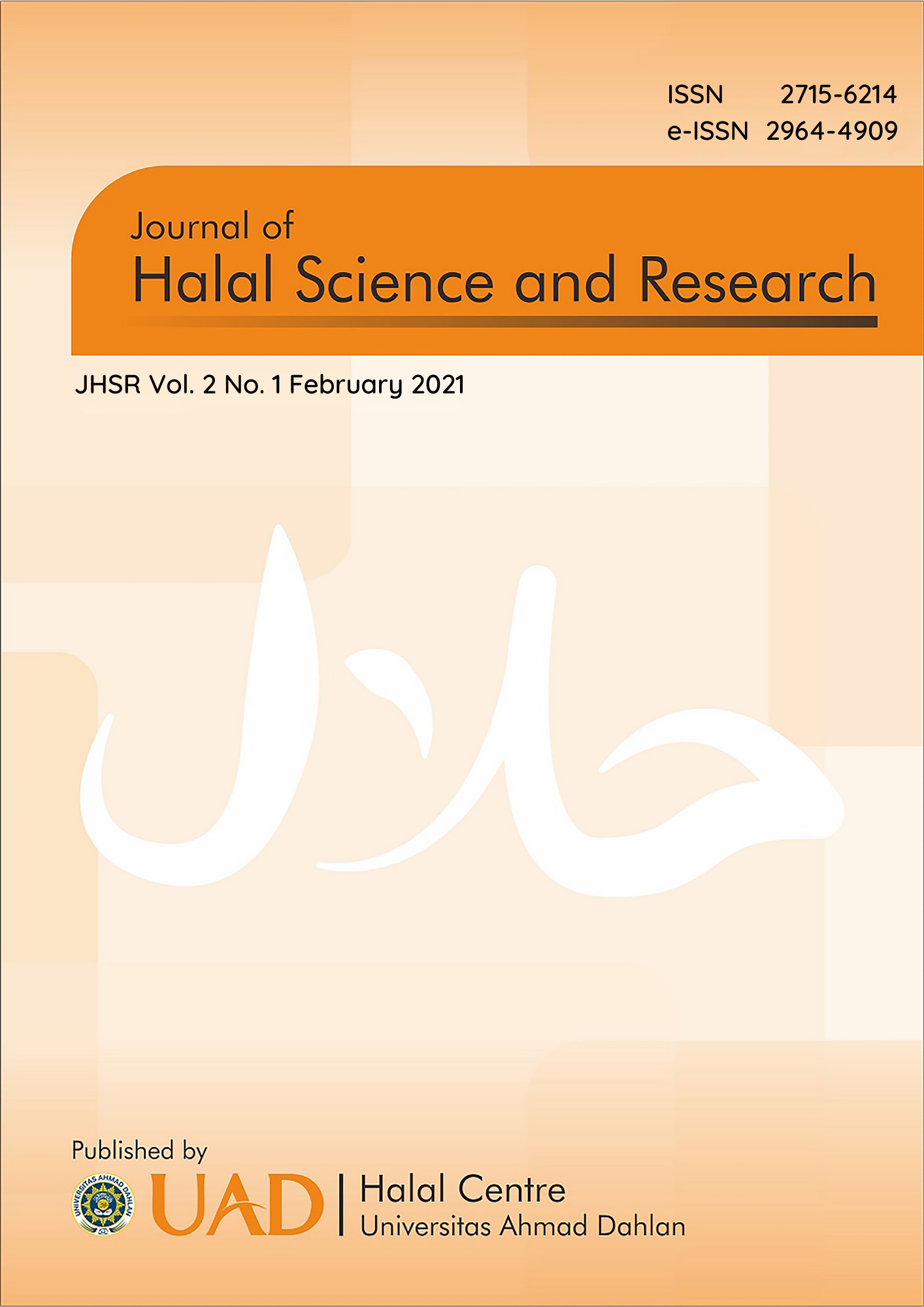The study of pig dna analysis methods in cosmetics: a review
DOI:
https://doi.org/10.12928/jhsr.v2i1.5177Abstract
Collagen is one of the components used for cosmetics. Functionally, collagen is derived from pig fat, which functions as a skin conditioning agent (Emollient), emulsion stabilizer (Emulsifier), and as ingredient to increase the viscosity of cosmetic preparations. The method that can detect pig content is the PCR method, which can confirm the presence of DNA content in pigs. In this study, an analysis of cosmetic products containing porcine DNA was carried out using the PCR method. This research was divided into two stages: the initial stage was DNA extraction, and the second stage was PCR analysis. This research is a study through literature study using the narrative review technique. This study aimed to collect information and examine the analysis method of identifying pig DNA contained in cosmetics to obtain the right and accurate way through a literature approach. From the literature study results, it can be concluded that the best extraction method for the isolation of porcine DNA in cosmetic preparations is the extraction method with the Boom Method, while the DNA analysis used to identify porcine DNA in cosmetics is RT-PCR (Real-time Polymerase Chain Reaction). Conventional PCR is because both methods have their respective advantages. The RT-PCR (Real-time Polymerase Chain Reaction) method can amplify and quantify the number of target DNA molecules. The Conventional PCR Method can form DNA bands based on the amplification value.
Downloads
Published
Issue
Section
License
Copyright (c) 2022 Universitas Ahmad Dahlan

This work is licensed under a Creative Commons Attribution-NonCommercial-ShareAlike 4.0 International License.
Authors who publish with JHSR (Journal of Halal Science and Research) agree to the following terms:
1. Authors retain the copyright and grant Universitas Ahmad Dahlan right of first publication with the work simultaneously licensed under a Creative Commons Attribution-NonCommercial-ShareAlike 4.0 License (CC BY-NC-SA 4.0) that allows others to share (copy and redistribute the material in any medium or format) and adapt (remix, transform, and build upon the material) the work for any purpose, even commercially with an acknowledgement of the work's authorship and initial publication in Universitas Ahmad Dahlan.
2. Authors are able to enter into separate, additional contractual arrangements for the non-exclusive distribution of the journal's published version of the work (e.g., post it to an institutional repository or publish it in a book), with an acknowledgement of its initial publication in Universitas Ahmad Dahlan.
3. Authors are permitted and encouraged to post their work online (e.g., in institutional repositories or on their website) prior to and during the submission process, as it can lead to productive exchanges, as well as earlier and greater citation of published work (See The Effect of Open Access).

This work is licensed under a Creative Commons Attribution-NonCommercial-ShareAlike 4.0 International License.




